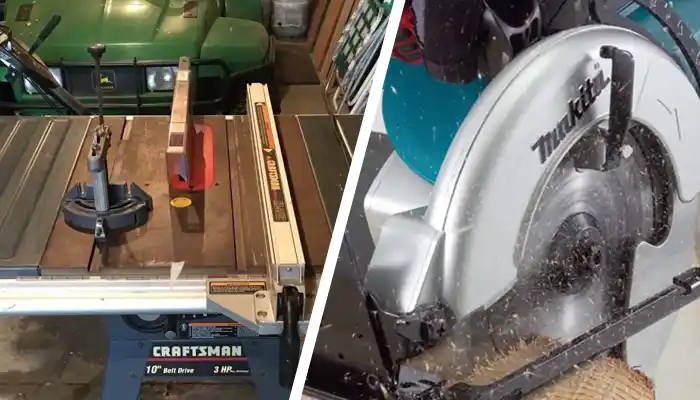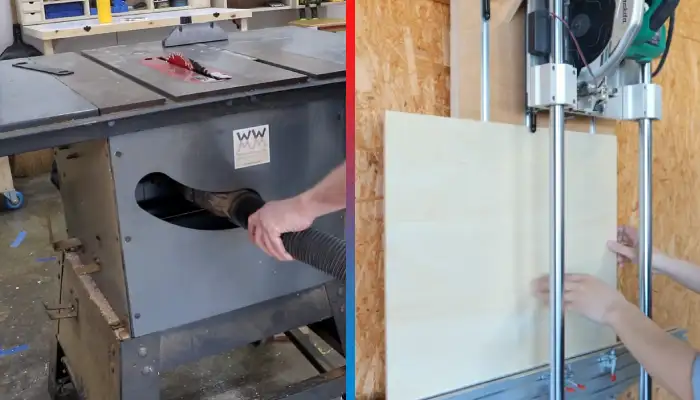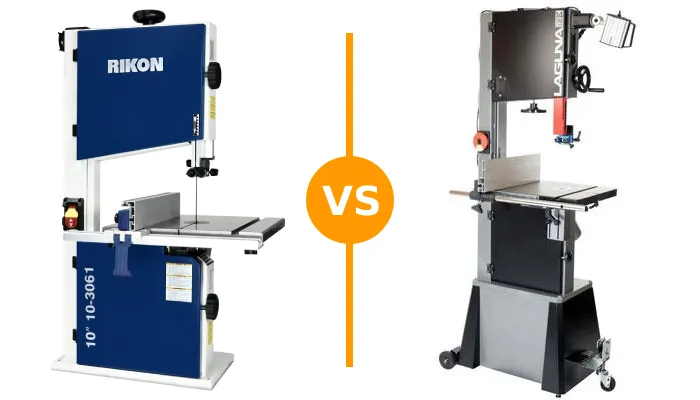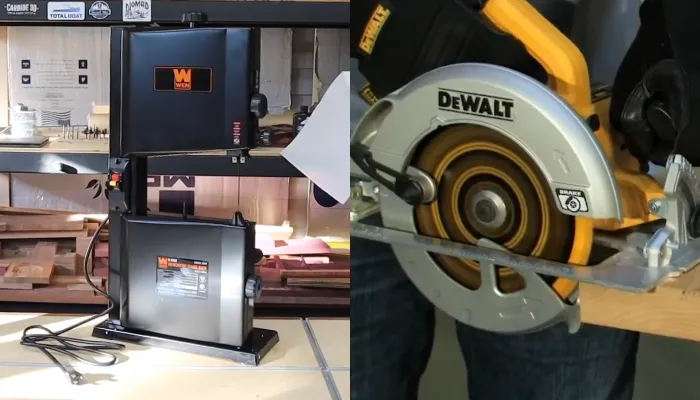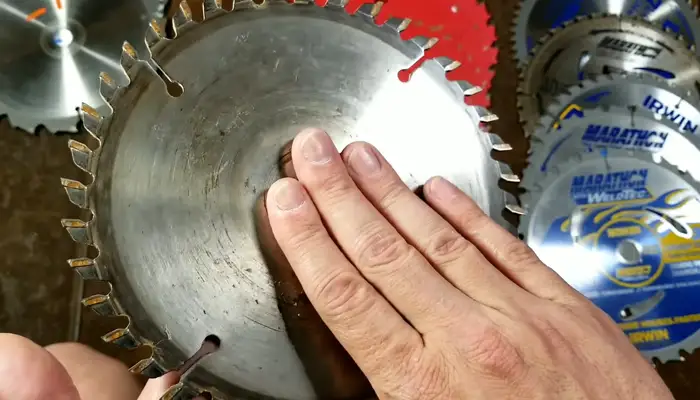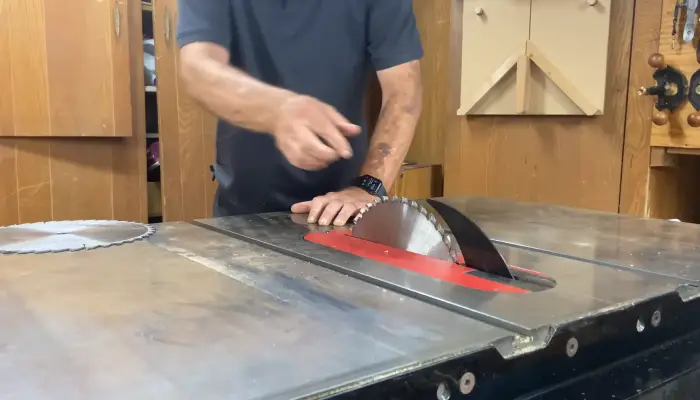Table Saw Belt Drive vs Direct Drive: 10 Significant Differences
As a woodworking enthusiast, I’ve often been puzzled over which power system performs best in table saws: the belt or the direct drive.
Both systems are designed to power the saw and ensure accurate cuts efficiently. After conducting thorough research and analyzing various aspects, I’ve found some differences between the two that you should consider.
Belt drive systems have the motor located farther from the blade, reducing sawdust build-up and minimizing damage from heat build-up. Also, this system provides the advantage of variable speed adjustments by changing the belt position.
However, direct drive systems transfer power directly from the motor to the saw blade, resulting in minimal energy loss. As part of this article, I will discuss the differences between belt drive and direct drive table saws to help you make an informed decision. So, let’s begin.
- Precision Cuts with Legendary Fence System
- Powerful 2.9 HP Induction Motor
- Big 52″ Rip Capacity for Large Stock
- Built-to-Last with Heavy-Duty Construction
- Low Vibration and Easy Tensioning
- Site-Pro Modular Guarding System
- Power-loss reset for safety
- Rack and pinion fence adjustment
- Metal roll cage for durability
- On-board storage for accessories
Table Saw Belt Drive vs Direct Drive: Major Differences
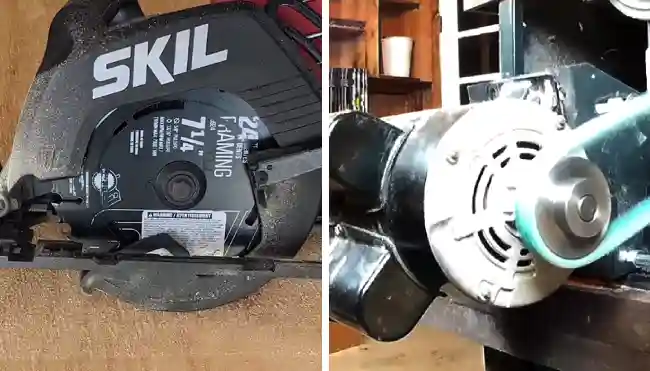
There are several major differences when comparing table saw belt drive and direct drive.
- Motor type and location
- Power transfer efficiency
- Versatility and variable speed
- Size and portability
- Saw blade options
- Blade movement after shutdown
- Kickback force
- Noise and vibration
- Maintenance and lifespan
- Cost
1. Motor Type and Location
I prefer the belt drive motor for its power and cooler operation. Belt drive systems commonly use induction motors without brushes, offering higher horsepower and less noise. These motors are typically found in full-size cabinet saws and contractor saws.
However, direct drive systems often utilize universal motors with brushes. While these noisier motors require more maintenance, they are well-suited for benchtops or portable saws. The motor is directly attached to the saw blade in direct drive table saws, resulting in a more straightforward and compact design.
2. Power Transfer Efficiency
One major difference between table saw belt drive and direct drive systems is their power transfer efficiency.
In direct drive systems, power is transferred directly from the saw motor to the saw blade, minimizing energy loss. This efficient energy transfer allows maximum power output, making direct drive systems suitable for hobbyists or those with limited space.
On the other hand, belt drive systems utilize a pulley and belt system to transfer power, which can result in some energy loss due to friction. However, using a belt drive allows for higher overall power, making it preferred by professional woodworkers for tasks that require deep cuts or working with hardwoods.
3. Versatility and Variable Speed
The versatility and variable speed capabilities offered by table saw belt drive and direct drive systems are significant factors to consider.
Although more straightforward, direct drive systems may be unable to adjust cutting speeds. This limitation can be problematic for tasks that require different cutting speeds, as the user is confined to a single speed setting.
Alternatively, belt drive systems provide the advantage of variable speed adjustments by simply changing the belt position. This versatility is especially beneficial for tasks requiring different cutting speeds, allowing the user to tailor the saw’s performance to specific requirements.
4. Size and Portability
Regarding size and portability, direct drive systems have the advantage. They’re known for their compactness and lightweight design, making them highly portable and suitable for those with limited space.
Direct-drive table saws are easy to transport, making them ideal for contractors working on different sites. On the other hand, belt-drive systems are larger and generally less portable. They’re designed for stationary use and are more suited for heavy-duty tasks.
The larger size of belt drive table saws contributes to greater power and stability, making them more suitable for professional woodworking shops.
5. Saw Blade Options
Due to their compact design, direct drive systems may have limitations regarding the available saw blade sizes, tilt angles, and depth capacity. This can restrict the range of cuts achieved with these systems.
Meanwhile, belt drive systems, with their larger design, offer greater flexibility in changing blades. This versatility allows users to easily adapt the saw to different cutting requirements.
6. Blade Movement After Shutdown
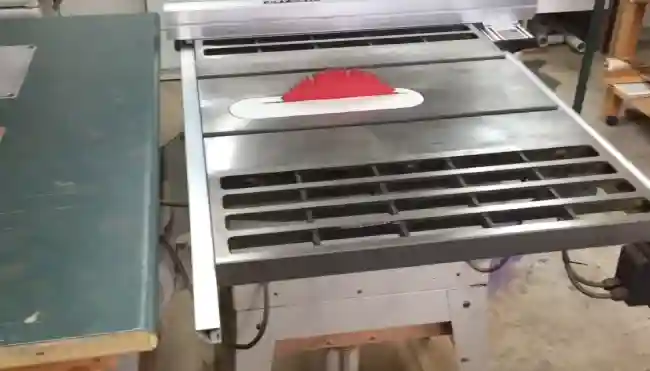
In a direct drive system, the smaller and lighter design may result in a potential lag in blade movement after shutdown. This lag can hurt the precision of cuts as the blade continues to coast before coming to a complete stop. You must be mindful of this coasting time and adjust your cutting techniques to ensure accurate and safe results.
On the other hand, belt drive systems, despite their larger size, tend to have a shorter coasting time after shutdown. This characteristic increases safety, as the blade stops more quickly, reducing the risk of accidental contact.
7. Kickback Force
Regarding kickback force, the belt drive system has a greater potential for generating force than the direct drive system. This is due to the mechanical advantage of the belt drive system, which allows for higher torque and power transmission.
However, note that the direct drive system generally produces less kickback force, making it a safer option for safety-conscious users.
8. Noise and Vibration
Direct drive systems generate louder noises due to the motor being directly attached to the blade. The absence of a belt to dampen vibrations contributes to the increased noise levels. This can be a consideration for users who prioritize a quieter working environment.
On the other hand, belt drive systems run quieter due to the belt’s ability to dampen vibrations. The belt acts as a buffer, absorbing and reducing the noise and vibrations produced by the motor and blade. This makes belt drive systems preferred for those seeking a quieter working environment.
9. Maintenance and Lifespan
Direct drive systems require less maintenance over their lifespan, making them cost-effective and suitable for general woodworking tasks. However, there’s a potential for motor overheating, especially during prolonged use.
In contrast, belt drive systems offer more durability in the long run, but they necessitate occasional belt replacement. Despite the additional maintenance, belt drives tend to last longer than their direct drive counterparts. The belt replacement process is relatively straightforward and can be done by the user with basic tools.
10. Cost
I prefer the belt drive system for table saws due to its higher cost but increased power and durability compared to the direct drive system.
Although belt drive table saws have a higher price tag, they offer several advantages that make them worth the investment. The belt drive system provides more power, allowing users to tackle heavy-duty tasks easily and cut through thick wood or hardwoods.
While the initial cost may be higher, belt drive table saws’ superior power and durability make them a wise choice for serious woodworkers.
However, direct-drive saws are cost-effective and suitable for many woodworking tasks, direct drives offer a balance between affordability and functionality. Users need to consider their specific needs and budget when making a choice.
Table Saw Belt Drive vs Direct: Comparison Chart
| Aspect | Belt Drive System | Direct Drive System |
| Motor Type | Induction motors without brushes | Universal motors with brushes |
| Power and Operation | Higher horsepower, cooler operation, less noise | Noisier, requires more maintenance, well-suited for benchtop or portable saws |
| Power Transfer Efficiency | Some energy loss due to friction | Efficient energy transfer, minimal energy loss |
| Versatility | Variable speed adjustments are possible by changing the belt position | Unable to adjust cutting speeds |
| Size and Portability | Larger, less portable | Compact, lightweight, highly portable |
| Saw Blade Options | Greater flexibility in changing blades | Limitations on blade sizes, tilt angles, and depth capacity |
| Blade Movement After Shutdown | Shorter coasting time after shutdown | Potential lag in blade movement after shutdown |
| Kickback Force | Greater potential for generating force | Generally produces less kickback force |
Is a belt drive or direct drive better on a table saw?

After weighing the differences, I’ve determined that belt drive outperforms direct drive on a table saw. While direct-drive units may be smaller, lighter, and less expensive, these advantages come at the cost of performance.
A belt drive system provides several key benefits, making it the superior choice for a table saw. The belt allows for greater power transmission and torque, resulting in smoother and more efficient cutting. Additionally, the belt absorbs vibrations, reducing noise and ensuring more accurate cuts.
Furthermore, belt-drive saws’ larger size and weight contribute to their stability and durability, making them better suited for heavy-duty tasks such as rips, dados, and angle cuts.
Are direct drive table saw motors quieter than belt drive?
Comparing the noise levels, direct drive table saw motors generally operate quieter than belt drive systems. This is because direct drive motors are simpler, with the motor directly connected to the saw blade. As a result, fewer moving parts and less friction reduce the overall noise produced during operation.
In contrast, belt drive systems use a pulley and belt to transfer power from the motor to the saw blade. This additional mechanism introduces more vibrations and noise. The belt itself can also generate noise as it rubs against the pulley.
Are belt drive table saws less efficient?
When considering the efficiency of table saws, it’s important to note that belt drive systems are generally less efficient than direct drive motors. This is because belt drives introduce additional friction and energy loss compared to the direct power transfer in a direct drive motor.
The belt in a belt drive system can stretch over time, causing a decrease in efficiency as power is lost through slippage. In addition, the pulleys and bearings in a belt drive system can also introduce friction and reduce efficiency.
On the other hand, direct-drive motors have a more direct power transfer, resulting in higher efficiency. Therefore, if efficiency is a priority in your table saw, a direct drive motor would be the better choice.
Which type of table saw motor is more suitable for heavy-duty tasks?
A belt-drive motor is the most suitable choice for heavy-duty tasks on a table saw. Belt-drive motors offer several advantages that make them ideal for handling tough woodworking projects.
Firstly, they provide more overall power, allowing for greater cutting depth. This is crucial when working with thick wood or hardwoods, ensuring efficient and precise cuts.
Additionally, belt drive motors are known for their durability and longevity, making them capable of withstanding the rigors of heavy-duty use. They’re designed to handle high torque loads, ensuring consistent performance even under demanding conditions.
Are direct-drive table saws more portable than belt-drive table saws?
In general, direct-drive table saws are more portable than belt-drive table saws. This is primarily due to their smaller size and lighter weight.
Direct-drive table saws are designed to be compact and easy to transport, making them suitable for those with limited space or mobility needs. Their lightweight nature allows for effortless maneuvering and transportation, making them popular among hobbyists and woodworkers who frequently need to move their equipment.
Additionally, the absence of a belt drive system reduces the overall bulk and complexity, further enhancing the portability of direct drive table saws.
Do belt drive table saws have a longer lifespan than direct drive saws?
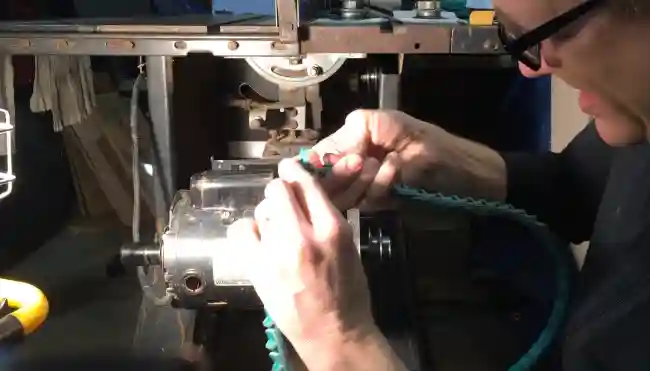
In my observation, belt drive table saws last longer than direct drive saws. This is primarily due to their design and motor type.
Belt drive saws typically use induction motors, which are known for their durability and longevity. These motors run cooler and have better ventilation, reducing the accumulation of sawdust and preventing overheating.
Conversely, direct-drive saws often use universal motors, which are compact but prone to overheating and wear. The lack of ventilation and increased heat generation can lead to motor failure and a shorter lifespan.
Table Saw Motors: Choosing Between Belt Drive or Direct Drive
Both options have advantages and disadvantages when choosing between a belt drive and a direct drive for a table saw.
Although direct-drive motors may be quieter and more portable, I recommend belt-drive motors for their greater efficiency, fast blade changing and suitability for heavy-duty tasks. Also, belt-drive table saws tend to have longer lifespans.
Ultimately, your decision should be based on your specific needs and user preferences. It’s like choosing between a smooth, silent ride or a powerful, long-lasting engine for your vehicle.
- Fully Enclosed Blade Guard
- Quick-Release Spreader/Riving Knife
- Easy-Glide Two-Position Fence System
- Cabinet-Mounted Robust Trunnions
- Innovative Hinged Motor Cover
- Fully Enclosed Blade Guard
- Quick-Release Spreader/Riving Knife
- Two-Position Fence System
- Heavy-Duty Cast-Iron Construction
- Robust Cabinet-Mounted Trunnions
Last update on 2025-11-25 / Affiliate links / Images from Amazon Product Advertising API

